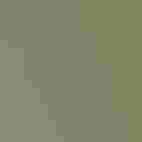Yellow-billed Magpie
At a Glance
A bird of open country in California's central valleys. While its Black-billed relative lives across Europe, Asia, and North Africa, as well as western North America, the Yellow-billed Magpie lives only in California -- in an area about 500 miles from north to south and less than 150 miles wide. Within this limited region, Yellow-billeds nest in colonies in groves of tall trees.
All bird guide text and rangemaps adapted from Lives of North American Birds by Kenn Kaufman© 1996, used by permission of Houghton Mifflin Harcourt Publishing Company. All rights reserved.
Category
Crows, Magpies, Jays, Perching Birds
IUCN Status
Vulnerable
Habitat
Fields, Meadows, and Grasslands, Forests and Woodlands, Shrublands, Savannas, and Thickets, Urban and Suburban Habitats
Region
California
Behavior
Direct Flight, Flap/Glide, Hovering
Population
400.000
Range & Identification
Migration & Range Maps
Mostly a permanent resident. Rarely wanders away from breeding areas, perhaps most often in winter.
Description
16-18" (41-46 cm). Unmistakable in its range. Like Black-billed Magpie but a bit smaller, with bright yellow bill, variable yellow skin near eyes.
Size
About the size of a Crow, About the size of a Mallard or Herring Gull
Color
Black, Blue, Green, White, Yellow
Wing Shape
Broad, Fingered, Rounded
Tail Shape
Long, Wedge-shaped
Songs and Calls
A raucous qua-qua-qua and a querulous quack.
Call Pattern
Flat, Rising
Call Type
Chatter, Chirp/Chip, Raucous, Scream, Whistle
Habitat
Stream groves, scattered oaks, ranches, farms. Most numerous in open oak savanna and where riverside groves of oaks, cottonwoods, and sycamores border on open country such as pastures or farmland.
Sign up for Audubon's newsletter to learn more about birds like the Yellow-billed Magpie
Behavior
Eggs
5-8, usually 7. Olive-buff, marked with brown or olive. Incubation is by female, about 18 days. Male brings food to incubating female.
Young
Both parents feed young. Time to fledging not well known, but parents may continue to feed young for several weeks after they leave nest. 1 brood per year.
Diet
Omnivorous. Diet varies with season, but year-round may average about 30% plant material, 70% animal material (mainly insects). May feed heavily on acorns in fall and winter, cracking them open by pounding with bill; also eats carrion in winter. Eats many grasshoppers in late summer. When foraging on ground, may use bill to flip over cow dung, wood chips, etc., to look for food. Magpies also steal food from each other and from other animals. Sometimes cache food items (such as acorns) in shallow holes in ground, tree crevices, etc
Nesting
Nests in small colonies. Pair formation may begin in fall, although birds remain in flocks during winter. Main courtship ritual involves male feeding female. Nest: Both sexes build nest, placing it far out on limb high in tree (usually 40-60' above ground). Nest often built on top of mistletoe clump, and even if not, may resemble such a clump from a distance. Nest is bulky domed structure (2-3' in diameter) with entrance on side, made of sticks and twigs. Interior of nest has base usually made of mud, lined with fine plant materials.
Conservation
Conservation Status
Surveys suggest population declines in recent decades. Has disappeared from some former areas of occurrence. Because of its limited range and specialized habitat requirements, climate change could pose a serious threat.
Climate Threats Facing the Yellow-billed Magpie
Choose a temperature scenario below to see which threats will affect this species as warming increases. The same climate change-driven threats that put birds at risk will affect other wildlife and people, too.







